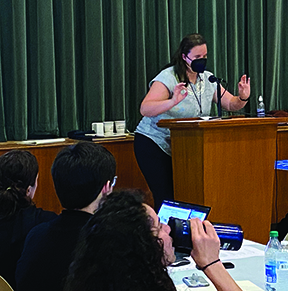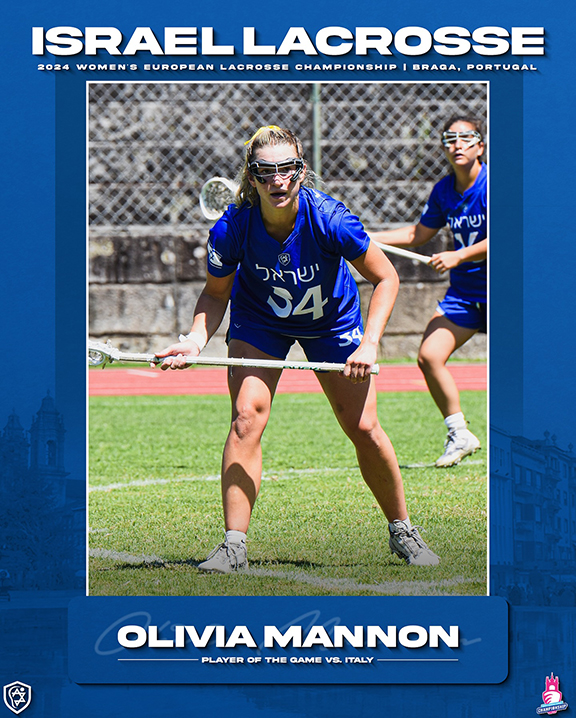Preserving Alabama’s Jewish history: Symposium held in Montgomery

Rabbi Scott Looper welcomes attendees to Temple Beth Or.
Who is preserving Alabama’s Jewish stories, and what resources exist to make sure the stories aren’t forgotten?
On July 25, about 80 people from around the state attended the first-ever Alabama Jewish Culture and History Symposium, held at Temple Beth Or in Montgomery.
Coordinated by the Alabama Folklife Association, the symposium provided a forum for researchers and laypeople to gather and discuss what historical projects are being done, how to properly preserve historical items that will be of interest to researchers, assess what is already available and where, and network on possible collaborations.
Emily Blejwas, director of the AFA, said the symposium grew out of a Jewish Folklife in Alabama working group, which has met quarterly online since 2022. That group was started after the AFA’s 2022 Cauthen Fellowships grant applications were reviewed, as there were three different Jewish history projects among the 21 applicants.
“The AFA connected the three applicants, who agreed a regular convening mechanism for communities and academics doing work in Jewish culture in Alabama would be helpful,” Blejwas said. At an early meeting, a list of priorities was established, one of which was a statewide symposium, and the AFA applied for and received a grant from the Alabama State Council on the Arts for the event.
Deborah Gurt of the McCall Library at the University of South Alabama spoke of the need for individuals and congregations to preserve scrapbooks, journals, letters and bulletins. “Anything that helps tell the stories of Alabama’s Jewish history.”
South Alabama has an archive of material mainly from the Mobile-area Jewish community, including Ahavas Chesed’s materials to 1989. As part of the event, there were displays from the Jewish Mobile Oral History Project.
There was also an exhibit of recent photographs, “We had to know who we were; We had to know who we weren’t” by Emily Williams. Williams, who is working on her master’s at Louisiana State University, has photographed Jewish history in several smaller communities in Alabama.

ISJL’s Nora Katz addresses the conference
Nora Katz, in one of her last events as director of heritage and interpretation at the Goldring/Woldenberg Institute of Southern Jewish Life, said they have over 800 oral histories that “provide insight into aspects of the Southern Jewish experience that might be missing from other sources.”
That said, the ISJL is not a “collecting institution,” but she suggested that institutions who want to preserve their stories work on a list of what to keep, “relying on a group of decision makers rather than one individual.”
Most congregations and institutions have individuals who represent “multiple decades of institutional memory.”
While discussing what items to preserve, Katz said grant applications are often overlooked, but she said they are “some of the most interesting documents,” because they tell the story of an institution’s plans and priorities.
One place that is a collecting archive is the Alabama Department of Archives and History. Keri Hallford described its offerings, noting that it is the first public archive in the country, pre-dating even the National Archive.
Melissa Young spoke about the Temple Beth-El Civil Rights Experience in Birmingham, which is set to have its grand opening on Oct. 26. With the increase in civil rights tourism and especially Jewish groups coming to the area, “we were looking for a sustainable method to welcome these groups,” and congregants were more than willing to share their stories about their experiences during the Civil Rights battles, as well as the attempted bombing of Beth-El by the Klan in 1958.
Susan Thomas described the extensive archives at Springhill Avenue Temple in Mobile, the state’s oldest Jewish congregation. The archive was established in 1980 and she took over in 2005. She brough a few items from the archive, including a registry of births, marriages and deaths dating back to 1860.
Thomas spoke of Leon Schwartz, who had been sheriff and then mayor in 1927, as “the most famous Mobilian you’ve never heard of.” A World War I veteran, Schwartz helped establish the American Legion. The archive has a collection of his materials.
Cantor Neil Schwartz, who recently retired from Temple Emanu-El in Dothan, presented his research into an unusual find in Dothan’s Jewish cemetery — several stones with three Hebrew letters — lamed, pay and kuf — carved together into one symbol, something he had never seen in any Jewish cemetery.
He discovered that these stones had been designed by Isadore Bauman, who died in 1946. Bauman had moved to the state from Poland, and in the area of Poland where he was from, it was common to use those letters on tombstones to signify a “short date” — commonly, the Hebrew letters for the year give just the last three digits, such as using 687 for 5687. While most stones simply leave it at that, this symbol was used in a few places to indicate that it is a shortened date.
Collaborations
Dan Puckett of Troy University led a session where academics shared what they are researching, and what funding opportunities exist. Puckett chairs the Alabama Holocaust Commission and is author of “In the Shadow of Hitler: Alabama’s Jews, the Second World War, and the Holocaust.”
Amy Milligan of Old Dominion University, who is documenting Selma Jewish history, said she works in “memory keeping and story telling,” how stories are remembered by individuals. She found her way to Selma and figured on working there for two weeks to tell the community’s story.
Instead, she ran into Ronnie Leet and Hanna Berger, two of the remaining three Jews in Selma’s communities, and that was over six years ago. In that time, she has made numerous trips to Selma, and recorded over 500 hours of oral history for a forthcoming book.
Selma’s Mishkan Israel is “a lens for us to understand the story of Jews in Selma, in the Black Belt, and the larger story of Jews in Alabama and the South.”
She said it is important to “center the narratives” of small congregations, because “no congregation is too small… everybody is somebody,” and small congregations are a wealth of historical knowledge and context.
Young spoke about her work in exploring the “second wave” of Birmingham’s Jewish history. Much has been done about the first Jewish families that arrived shortly after the city was formed in 1871, of German origin and acculturated. Much is also known about the Yiddish-speaking Eastern European immigrants from 1895 to 1915.
“In between was a second wave that is almost never recognized,” she said. There were lots of splinter groups that fought with each other, and a surprising amount of movement among the community’s congregations.
She said it is vital for community members to tell their stories. “I couldn’t do what I do without people telling me their stories.”
Being able to tell the stories is becoming increasingly challenging regarding the Holocaust. Ann Mollengarden of the Alabama Holocaust Education Center said that for the most part, “we don’t have survivors to tell us stories any more.” Now, the search is on for further family stories, newspaper clippings, anything that can preserve the memories.
The AHEC has an archive online detailing every Holocaust survivor known to have resettled in Alabama at some point. Currently, there are almost 180 identified.
“In learning the stories, we are able to teach the history,” Mollengarden said.
Dahlia Road, a duo in Auburn that recently released their first album, “Our Way Back Home,” also performed, and there were tables of Jewish-related books published by the university presses of Alabama and Georgia.
In summing up the day, Milligan asked for communities to consider what would be most helpful to them in collecting and preserving their history. The AFA is planning to make the symposium a regular event, and there is talk of doing the symposium or workshops around the state.



